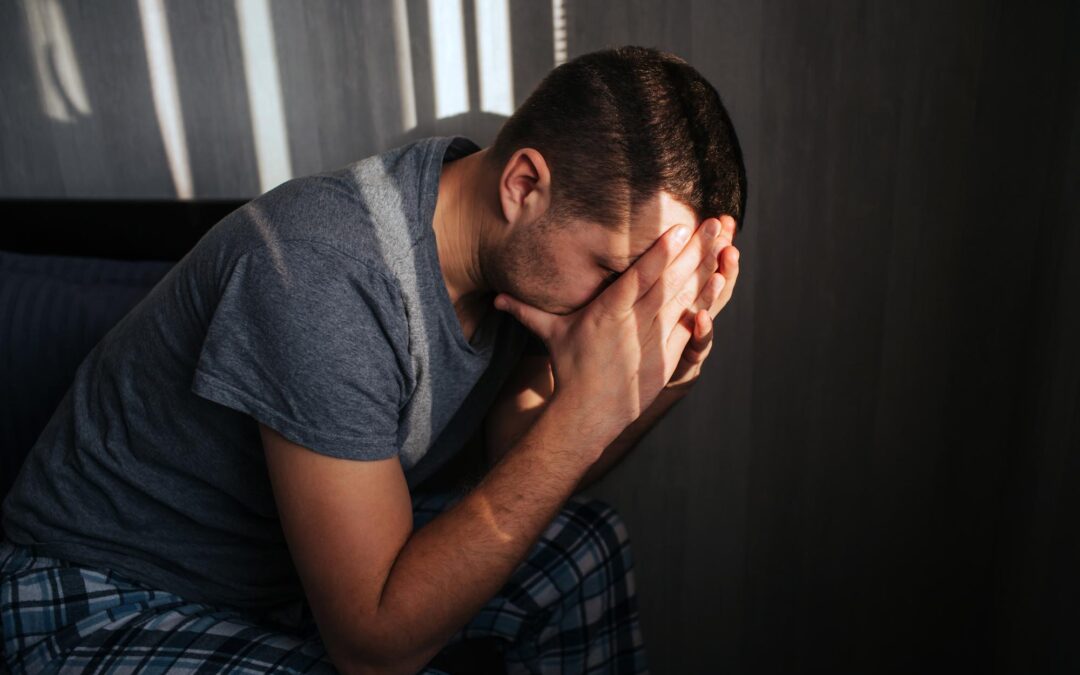Unfortunately, the war on opioid addiction has climbed to an all-time high. More and more people are struggling to overcome misuse. In essence, the first step toward help is detox. By and large, a person will experience terrifying withdrawal symptoms. Usually, understanding the opiate withdrawal timeline process and receiving help from a professional facility make things safer and easier. At CNV Detox, we provide ethical detox and residential treatment services so that patients can enjoy long-term recovery.
What Are Opiates?
Opiates come from the opium poppy plant. They are narcotic drugs that bind to receptors in the brain. This results in depression of the central nervous system, which relieves pain.
Presently, many opioids are given by prescription. For instance, morphine, fentanyl, codeine, and oxycodone are just a few opioid medicines that are used to treat chronic pain. On the other hand, heroin is an example of an illegal opiate.
Why Are Opiates So Addictive?
A 2018 National Survey on Drug Use and Health reported that approximately 10 million people in the United States misuse opioid painkillers every year. Human nature is made to maximize pleasure. Therefore, individuals do anything to relieve pain. Due to the ability to quickly disrupt chemicals in the brain, opioids are extremely dangerous and addictive.
Also, these drugs are readily available, and prescriptions are not illegal. Effects on the body are simple to hide, which makes misuse easier as well. Although certain drugs take a while to get a user hooked, a person can almost immediately become addicted to opioids.
Opiate Withdrawal Signs and Symptoms
Withdrawal occurs when a person stops taking opiates after his or her body relies on them to get “high” for the day. Commonly, symptoms appear within 12 hours of taking the last dose.

Signs and Symptoms
- Anxiety
- Insomnia
- Runny nose
- Dilated pupils
- Body aches
- Nausea/vomiting
- Tremors
- Rapid breathing
- High blood pressure
- Seizures
- Hallucinations
Benefits of Medical Detox Before Treatment
After a person admits that a problem exists, detox is the first step toward recovery. In essence, detox clears the body of toxins. It can be a painful and strenuous process. Without medical supervision, results may be fatal.
Opioid withdrawal symptoms are severe. As a result, many people relapse and are likely to overdose without supervision. With medical detox, a person is monitored for physical problems.
Also, certain medications are prescribed to help with symptoms, including anxiety. For instance, methadone and buprenorphine are used as opioid replacements. In this matter, the body is fooled into believing that the substance is still in the body so that withdrawal symptoms are lowered. Luckily, doctors can use these medications and taper them off slowly so that results are not as harsh on a patient’s body. Also, they help to control cravings without the sense of the “high” that comes from problem opioids.
Opiate Withdrawal Timeline
Different kinds of opioids are abused. Usually, the opiate withdrawal timeline begins 8 to 30 hours, and 10 days after the last dose. However, there is a general timeline that is helpful when trying to understand what to expect.
Day 1: Opiate Withdrawal Timeline
Day 1 opiate withdrawal includes the time up until 24 hours after the last dose. Normally, this time frame includes withdrawal for opioids like heroin. A person can expect several symptoms.
- Headaches
- Anxiety
- Muscle pains
- Low appetite
- Insomnia
- Cravings
Day 2: Opiate Withdrawal Timeline
Day 2 opiate withdrawal occurs 24 to 48 hours after the last dose. During this time, withdrawal begins for opioids like oxycodone. A person can expect to experience even more symptoms at this point.
- Panic attacks
- Excessive sweating
- Gastrointestinal issues
- Similar symptoms from the first day
Day 3: Opiate Withdrawal Timeline
Day 3 opiate withdrawal symptoms are at their most active, especially for short-acting medication. A person may begin to exhibit even more symptoms.
- Vomiting
- Diarrhea
- Similar symptoms from the first two days
Day 4: Opiate Withdrawal Timeline
Throughout day 4 opiate withdrawal, a person who misuses long-acting medication will suffer the most. Symptoms may be quite severe and disturbing.
- Chills
- Enlarged pupils
- Extreme tiredness
- Similar symptoms from the first three days
Days 5 to 7: Opiate Withdrawal Timeline
The next few days bring similar withdrawal symptoms as the other four. Eventually, when the weekends, a person may notice that withdrawal starts to subside.
Long-Term Withdrawal Symptoms
Indeed, a person may experience post-acute withdrawal symptoms for months after quitting opiates.
- Depression
- Sleep issues
- Opiate cravings
Factors That Affect The Opiate Withdrawal Timeline
The opiate withdrawal timeline mentioned above may be altered and affected by different factors. These include the following:
- How many opiates are in a person’s system at the time detox begins
- The severity of dependence
- A patient’s health
- Genetics
- The type of detox being used
Reasons to Choose A Medical Detox Facility
When a person chooses medical detox at CNV Detox, he or she may receive medication to lower the severity of his or her symptoms. They are used to shorten detox as well. Oftentimes, medical detox provides emotional support. Additional therapies may include massage or yoga. When a patient feels relaxed, it becomes easier to get through the process. Also, being able to manage symptoms in a better way than with an at-home detox makes opiate cravings more tolerable. This lowers the probability of relapse and overdose.
When Other Conditions Exist
Also, certain withdrawal symptoms may be dangerous to a person’s health. For example, if a person has extreme diarrhea or vomiting, dehydration may result. Without medical supervision, this can be threatening and lead to other problems. In addition, underlying medical conditions may be addressed. For instance, a patient may be battling a mental illness along with opioid addiction. Under medical detox, doctors evaluate patients and develop individualized plans that address these personal issues.
The Importance of Pursuing a Treatment Program After Detox
Detox is just the first step towards sobriety. However, recovery does not stop at this point. For long-term recovery, it is essential to attend a formal course of treatment after detox is completed. In other words, this helps the patient identify triggers and uncover a healthy way to deal with them. It is essential to receive care for other underlying problems as well. In fact, without support and tools to keep a person on the right path, successful recovery into the future is not possible.
Integrated Care to Fight Opioid Relapse
Each person is different. Therefore, individualized treatment plans are necessary. Also, treating the “whole” individual raises the likelihood of a successful attempt at long-term sobriety. Inpatient care provides a more strict regimen, but a trained and experienced staff is available 24/7 for problems that arise. At CNV Detox, we are ready to help patients continue through detox into a successful treatment program.
Various Therapies Designed to Meet Individual Needs
In light of the challenges that each person faces, there are a variety of therapies that help patients kick the opiate habit.
Individual Therapy
This offers ways to change negative behaviors. In other words, a therapist helps a patient build coping skills to deal with triggers and cravings.
Group Therapy
Group sessions help patients learn and grow with each other. Learning that people share similar challenges provides support. Also, patients can practice all of the skills that they have been learning.
Family Therapy
Addiction affects more than the person who misuses drugs. Opioid misuse can cause terrible rifts in relationships with friends and family. During family counseling sessions, communication skills are heightened, and healthy boundaries are set. As a result, things become mended.
Holistic Therapy
Sometimes, unconventional therapies work best to treat a person’s body, mind, and spirit. Things like yoga, massage, and other relaxation techniques are practiced so that a person can become calm, can healthily handle triggers, and can prevent relapse.
Benefits of Opiate Misuse Treatment
- Development of healthy coping mechanisms to prevent relapse
- Reach sobriety goals
- Create a network of support and security
- Identify underlying issues that cause substance abuse, including mental health problems
- Rebuild relationships that become strained during misuse
Where to Turn When Severe Withdrawal Symptoms Occur
When individual withdrawal symptoms are at their worst, it is important to have a way to handle them. Therefore, it is advised to work with a medical detox facility. At CNV Detox, we are ready to help a person take the first step toward sobriety. When an individual is ready to enjoy a life of recovery, our staff is prepared to join every step of the way.
At our California rehab, an individual can begin a medical detox and complete further treatment. Our goal is to offer support and healing to all patients and their loved ones. Therefore, each patient enjoys a calm environment, medical supervision, and a variety of therapy options. This ensures a successful recovery into the long term. For more information, contact us today.





